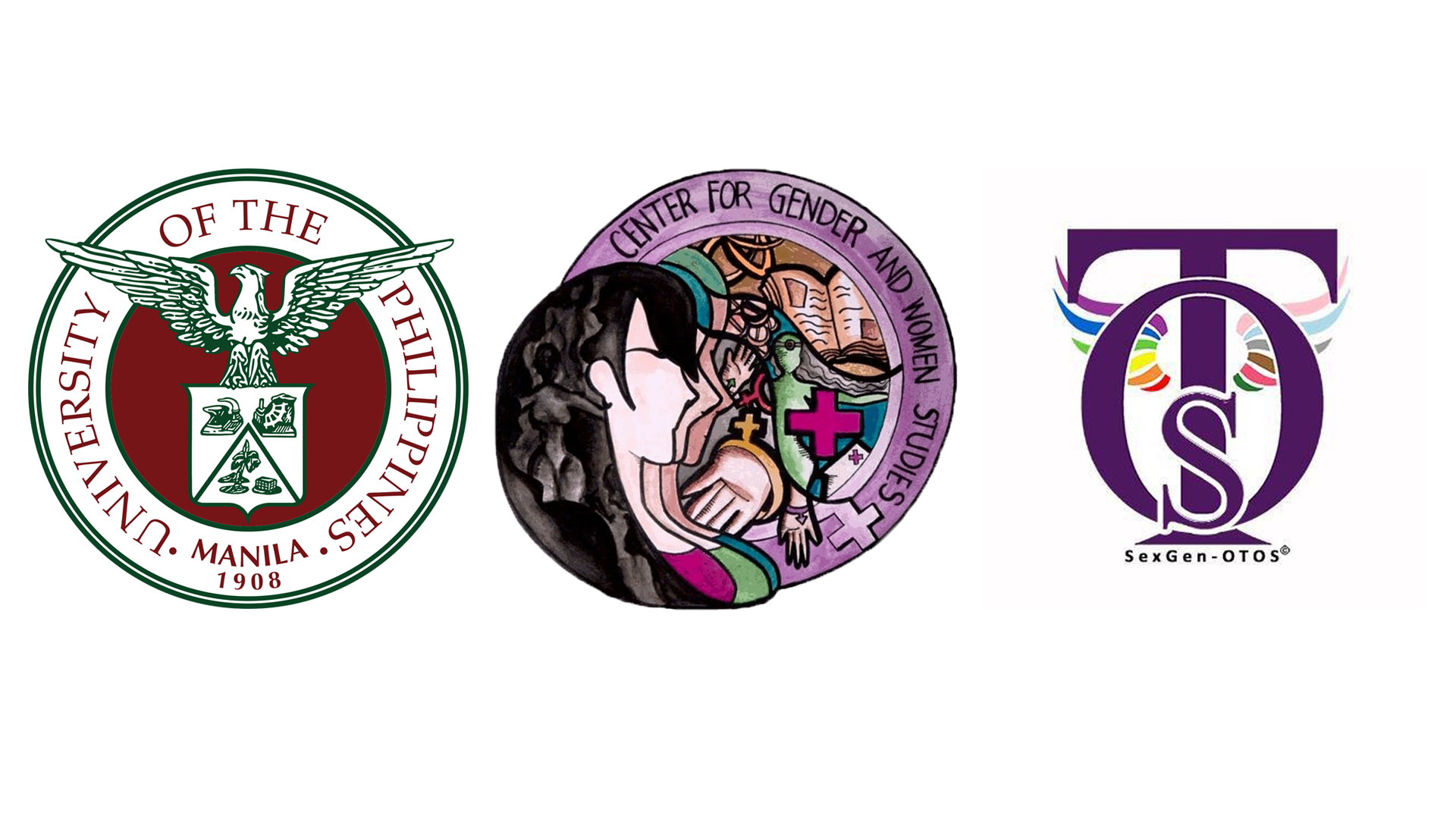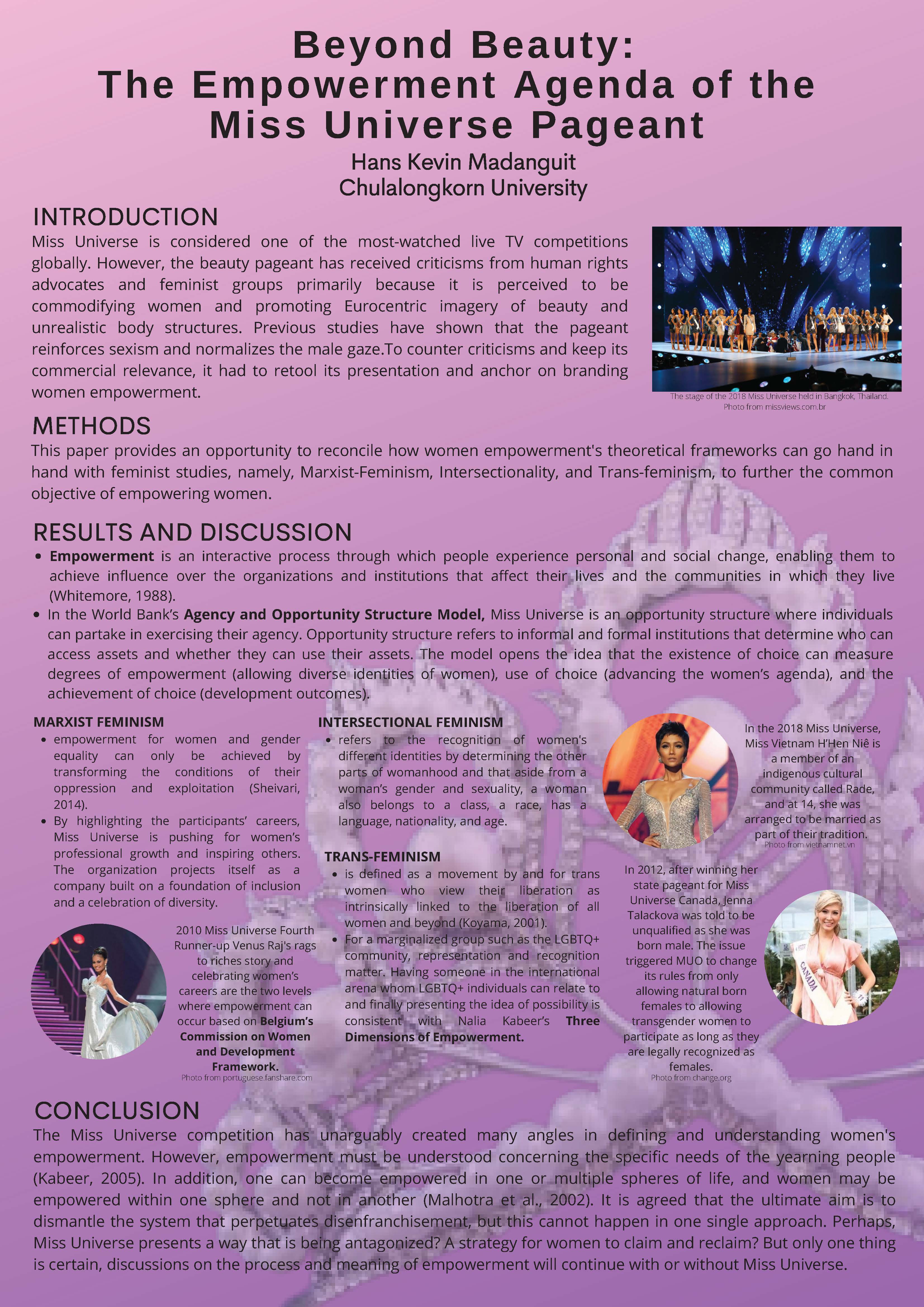Miss Universe is considered one of the most-watched live TV competitions globally, estimated to have reached over 1 billion televiewers from 170 countries on one of its coronation nights. The beauty pageant, which started in 1952 in California, has received criticisms from human rights advocates and feminist groups primarily because it is perceived to commodify women and promote Eurocentric imagery of beauty and unrealistic body structures. Despite these, the competition annually attracts, on average, 80 representatives from different countries and territories around the globe. Previous studies have shown that the pageant reinforces sexism and normalizes the male gaze while forging colonial mentality and the economic, political, and socio-cultural hegemony. To counter criticisms and keep its commercial relevance, it had to retool its presentation almost every year and anchor on branding the pageant that empowers women. Hence, this paper aims to examine the ways how the mounting of Miss Universe did empower women. This paper provides an opportunity to reconcile how women empowerment's theoretical frameworks can go hand in hand with feminist studies to further the common objective of empowering women. The paper juxtaposes the theories to the Miss Universe’s concept of empowerment because the contest is one of the most polarizing subjects for women empowerment agendas.
The paper banks on the subsequent feminist studies: Marxist-Feminism, Intersectionality, and Transfeminism. Marxist-Feminism to check on the capitalist nature of Miss Universe’s agenda to promote women empowerment and how the pageant advocates for women to be economically independent, which is argued to give them power and agency in their lives. On the other hand, intersectionality assesses how Miss Universe projects itself as inclusive and sensitive to women's different identities but also discriminatory at the same time due to its current standards for qualifications. Lastly, after allowing trans women to participate, is Miss Universe a trans feminist organization, or are trans women only used to generate attention and sustain the pageant’s commercial value?

